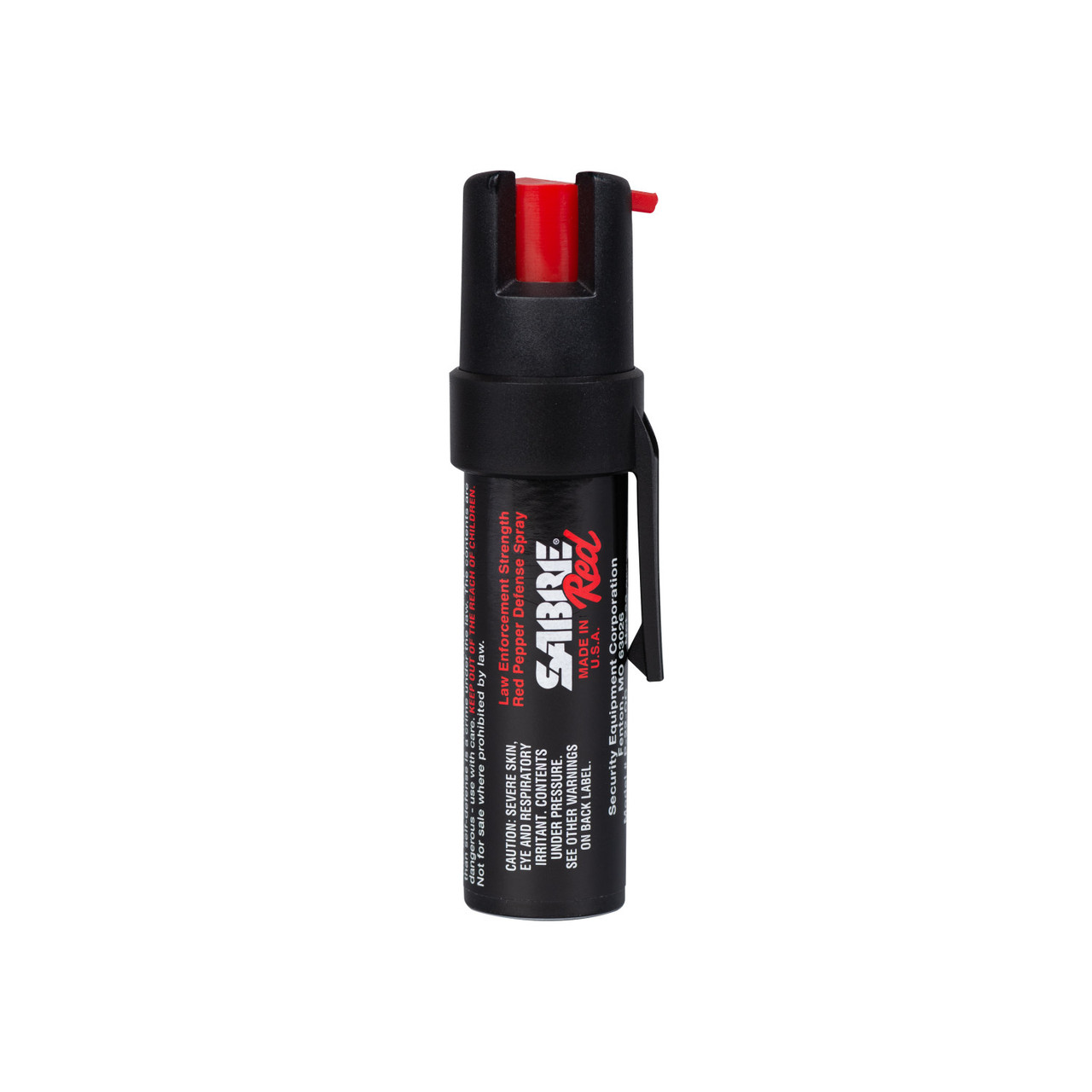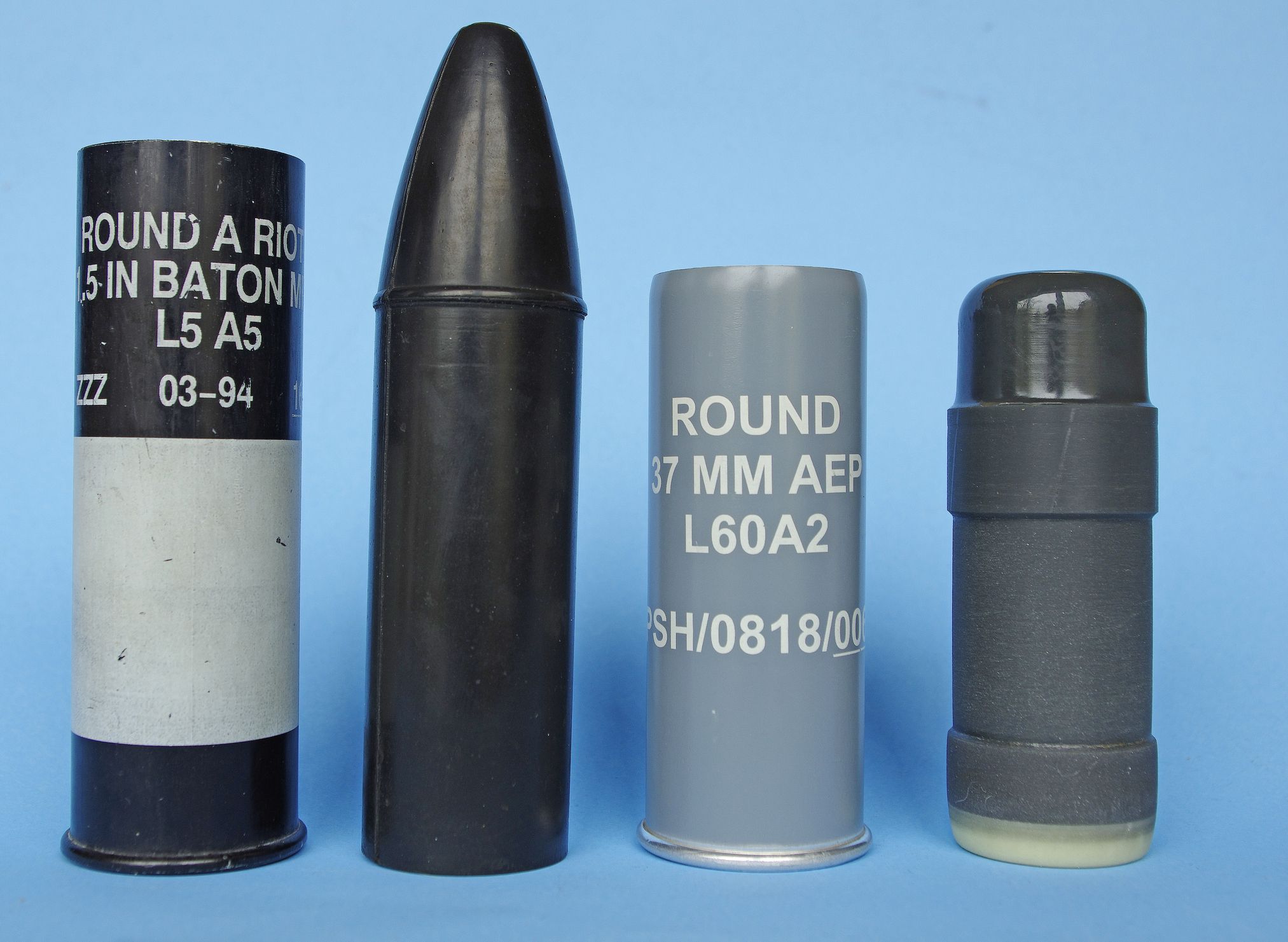Last updated on September 4th, 2024 at 02:04 pm

Take Home Points
- Every crowd control method can be lethal
- Pepper spray and tear gas injuries need decontamination and often ophthalmic evaluation
- Rubber bullets andbean bag rounds can seriously injure patients, do your normal trauma workup for these injuries
We have the coolest job – evaluate and stabilize anyone, anything, anytime; with the rise of mass gatherings and civil unrest, especially at the college campuses that abut our academic EM programs, it is only a matter of time until we start seeing patients with injuries from crowd control devices. One thing we want to stress here – EVERY SINGLE METHOD WE MENTION BELOW HAS BEEN ASSOCIATED WITH DEATH. Just because these devices are called “non-lethal”, doesn’t mean you should discount the injuries they cause.
General Evaluation/Management: P-ABCD²E
Step zero in evaluating all of these patients is that well worn phrase we learned in our BLS classes – “Assess scene safety”. When in the ED, this means that you wear the appropriate PPE – some of the devices we will discuss are aerosolized powders or liquids that may still be on the patient. Don’t assume that the patient was decontaminated before the came to the ED. Wear eye protection, gloves, a mask, and a gown if you’re unsure what the patient was exposed to.
Start with the ABC’s. Do not pass go, do not collect $200 until you’ve evaluated the person’s airway, breathing and circulation. Afterwards we continue with D² (this is “Disability”, so assessing GCS and neurological deficits and “DEFG: Don’t Ever Forget the Glucose”, a point of care glucose) , and E for exposure and in this case, also decontamination. Decontamination can take a lot of different forms, from the patient removing an item of clothing and discarding it to having the patient go to a eyewash station or shower.
- PPE
- Airway (check the patient’s airway and ability to phonate/handle their secretions)
- Breathing (listen for breath sounds and look for equal chest rise)
- Circulation (check for peripheral pulses and BP)
- Disability (check GCS and for peripheral neurological deficits)
- DEFG/”Don’t Ever Forget the Glucose” (Check a finger stick blood glucose if applicable)
- Exposure and decontamination (expose the patient to look for hidden injuries and decontaminate – this step may be done earlier, make sure to remove contacts)
Once your initial evaluation with the ABCs, move on doing an AMPLE history. This is a succinct history that is often done by our colleagues in EMS where doing a full and detail oriented history is not necessary: A – Allergies, M – Medications, P – Past Medical History, L – Last meal (I often skip this one as it’s not relevant to us), E – Events leading up to presentation.
Specific Devices/Substances
Pepper Spray

- Background: Developed in 1970s for law enforcement, often aerosolized substance, now available commercially; lots of management options have been studied, though none seem to be consistently better than just plain old irrigation (milk, Magnesium-Aluminum-Oxide, mineral oil)1
- Only ~25% of patients will present to a healthcare setting after exposure2
- Mechanism of Action: Lacrimator; Oleoresin capsicum – derivative of capsaicin, acts on TRPV1 receptors (present on ALL ORGANS); usually aerosolized spray3
- Expected Effects:
- Airway – Cough/sneeze/excessive salivation, laryngospasm/bronchospasm
- Cardiac – increased HR/BP
- Eyes – Severe eye irritation (conjunctival injection/-itis), lacrimation, corneal injuries
- Skin – Burning sensation and erythema
- GI – If enough is ingested, nausea/vomiting
- Evaluation: P-ABCD²E, decontaminate, do an eye, oropharyngeal, and skin exam, listen to the lungs
- Red Flags: History of underlying lung disease/reactive airway disease, underlying cardiovascular disease, prolonged exposure
- Management: in most cases, self-limited within 10-30 min after being removed from the source
- Airway – Mainly supportive, consider ABG/CXR, beta-agonists, steroids, non-invasive ventilation in those with history of reactive airway disease or intrinsic lung disease
- Cardiac – Mainly supportive, consider serial ECGs in those with underlying cardiac history
- Skin – Dilution/Decontamination with water/soap
- It may be easiest to have the patient utilize a shower if possible
- Eyes – Remove contact lenses, saline/water irrigation, evaluate for corneal injuries
- You can use a Morgan lens, or, in a pinch, you can connect a liter of normal saline to nasal cannula and place the prongs on the bridge of the patient’s nose to run fluids. An explanation is available here on ALiEM Tricks of the Trade.4
- Give a topical anesthetic first to reduce pain, prevent blepharospasm, and improve ability to thoroughly irrigate5
- You may be able to arrange with law enforcement and security to bring the patient over to the eye wash station if they are in custody
- GI – Supportive, consider fluids, Magnesium-Aluminum-Oxide, H2 blockers, or antiemetics
- No role for activated charcoal or gastric lavage
- Disposition: Most can be treated and discharged, be on the lookout for patients with severe respiratory or cardiac symptoms
Tear Gas

Much of this is the same as pepper spray
- Background: Heterogeneous group of agents (o-chlorobenzylidenemalononitrile, chloroacetophenone, and dibenzoxazepine), developed for military use, now used by law enforcement as well and dispersed as aerosolized powders6
- Mechanism of Action: Lacrimators/Alkylating agents that transiently inactivate pyruvate decarboxylase system causing tissue injury and pain via bradykinin release; also act on TRPA1 channels on nociceptors causing sensation of heat/pain, dibenzoxazepine is the most potent
- Expected Effects:
- Airway – Cough/sneeze/excessive salivation, laryngospasm/bronchospasm, chemical pneumonitis, asphyxia
- Cardiac – increased HR/BP
- Eyes – Severe eye irritation (conjunctival injection/-itis), lacrimation, corneal injuries
- Skin – Burning sensation and erythema
- GI – If enough ingested, nausea/vomiting/diarrhea
- Evaluation: P-ABCD²E, decontaminate, do an eye, oropharyngeal, and skin exam, listen to the lungs
- Red Flags: History of underlying lung disease/reactive airway disease, underlying cardiovascular disease, prolonged exposure
- Management: in most cases, self-limited within 10-30 min after being removed from the source
- Airway – Mainly supportive, consider ABG/CXR, beta-agonists, steroids, non-invasive ventilation in those with history of reactive airway disease or intrinsic lung disease
- Cardiac – Mainly supportive, consider serial ECGs in those with underlying cardiac history
- Skin – Dilution/Decontamination with water/soap
- It may be easiest to have the patient utilize a shower if possible
- If explosive devices were used to spread the agents, thoroughly examine for foreign bodies and lacerations/abrasions
- Eyes – Remove contact lenses, saline/water irrigation, evaluate for corneal injuries
- You can use a Morgan lens, or, in a pinch, you can connect a liter of normal saline to nasal canula and place the prongs on the bridge of the patient’s nose to run fluids. An explanation is available here on ALiEM Tricks of the Trade.4
- Give a topical anesthetic first to reduce pain, prevent blepharospasm, and improve ability to thoroughly irrigate5
- You may be able to arrange with law enforcement and security to bring the patient over to the eye wash station if they are in custody
- GI – Supportive, consider fluids, Magnesium-Aluminum-Oxide, H2 blockers, or antiemetics
- No role for activated charcoal or gastric lavage
- Disposition: Most can be treated and discharged, be on the lookout for patients with severe respiratory or cardiac symptoms
Rubber Ballistics/Bullets/Bean Bag Rounds (Kinetic Impact Projectiles)

- Background: Kinetic impact projectiles (KIPs) that are fired from riot guns or regular firearms
- Rubber bullets were developed in the 1970s during protests in Northern Ireland, and starting to be used more frequently in US, they may not be fully made of rubber, and may be rubber-coated metallic projectiles9
- Bean bag rounds were also developed in the 1970s and used in the US since the 1990s and is generally a synthetic bag filled with metallic pellets fired from a shotgun10
- Mechanism of Action: These projectiles can impart both blunt and penetrating trauma to their victims, ultimately they can be treated as the same as their “lethal” counterparts (non-rubber encased bullets and non-enclosed shotgun pellets)
- KIPs can travel almost the same speed as a 0.45-caliber bullet
- Expected Effects: Expect the same injury pattern you would in normal penetrating trauma with localized blunt trauma; there have been numerous accounts of these devices causing pneumothorax, liver/splenic lacerations, bony and dental fractures, intracranial bleeding, hyphema, testicular rupture, skin lacerations, etc.1112
- Evaluation: Treat these the exact same way you would evaluate any penetrating trauma (ABCDE for your primary and then secondary to look for any missed injuries)
- Red Flags: Again – you should not manage these differently than your run of the mill penetrating trauma, expect some local blunt trauma where you see impacts
- Management: Management does not change compared to your normal trauma protocol for penetrating trauma
- Primary exam with ABCDE
- Secondary exam
- Trauma focused imaging if your patient is stable enough for it, otherwise, stabilize the the patient and consult with your trauma surgeons about going to the OR
- Disposition: Highly variable depending on the injury pattern
Summary
Despite being called “less-lethal,” crowd control devices like pepper spray and KIPs can inflict serious injuries. Once again, we have to emphasize: EVERY SINGLE METHOD WE MENTION BELOW HAS BEEN ASSOCIATED WITH DEATH. ED staff responding to protests or large gatherings must prioritize scene safety with PPE, then stabilize patients using ABC protocols. Following decontamination, management varies depending on the device. Pepper spray and tear gas require airway support, eye irrigation, and pain control, while rubber bullets and bean bag rounds necessitate a full trauma evaluation.
Cite this post: Arman Hussain, MD, Melanie Schroeder, MD, Hashem Hraky, DO. “Crowd Control Devices – Initial Evaluation and Management in the ED”. GW EM Blog. May 8, 2024. Available at: https://gwemblog.com/crowd-control.
Related Posts:
rMETRIQ Score: Not yet rated/21
References
- Tidwell RD. Tear gas and pepper spray toxicity. StatPearls [Internet]. May 14, 2023. Accessed May 8, 2024. https://www.ncbi.nlm.nih.gov/books/NBK544263/. ↩︎
- Forrester MB, Stanley SK. The epidemiology of pepper spray exposures reported in Texas in 1998-2002. Vet Hum Toxicol. 2003 Dec;45(6):327-30. ↩︎
- Hagler E. ToxCard: Riot control agents. emDOCs.net – Emergency Medicine Education. June 25, 2020. Accessed May 8, 2024. https://www.emdocs.net/toxcard-riot-control-agents/. ↩︎
- Michelle Lin M. Trick of the trade: Eye Irrigation Setup. ALiEM. February 20, 2019. Accessed May 8, 2024. https://www.aliem.com/trick-of-trade-eye-irrigation-setup/. ↩︎
- Schep LJ, Slaughter RJ, McBride DI. Riot control agents: the tear gases CN, CS and OC-a medical review. J R Army Med Corps. 2015 Jun;161(2):94-9. [PubMed] [Reference list]) ↩︎
- Schep LJ, Slaughter RJ, McBride DI. Riot control agents: The tear gases CN, CS and OC—a Medical Review. Journal of the Royal Army Medical Corps. 2013;161(2):94-99. doi:10.1136/jramc-2013-000165 ↩︎
- Michelle Lin M. Trick of the trade: Eye Irrigation Setup. ALiEM. February 20, 2019. Accessed May 8, 2024. https://www.aliem.com/trick-of-trade-eye-irrigation-setup/. ↩︎
- Schep LJ, Slaughter RJ, McBride DI. Riot control agents: the tear gases CN, CS and OC-a medical review. J R Army Med Corps. 2015 Jun;161(2):94-9. [PubMed] [Reference list]) ↩︎
- Ferros M. Not so soft: Emergency physicians monthly. Emergency Physicians Monthly | Independent news and analysis in emergency medicine. November 16, 2020. Accessed May 8, 2024. https://epmonthly.com/article/not-so-soft/. ↩︎
- de Brito D, Challoner KR, Sehgal A, Mallon W. The injury pattern of a new law enforcement weapon: The police bean bag. Annals of Emergency Medicine. 2001;38(4):383-390. doi:10.1067/mem.2001.117272 ↩︎
- Pearl RC, Torbati S, Geiderman JM. Kinetic Projectile Injuries Treated During Civil Protests in Los Angeles: A Case Series. Clin Pract Cases Emerg Med. 2021 Nov;5(4):385-389. doi: 10.5811/cpcem.2021.7.52885. PMID: 34813425; PMCID: PMC8610479. ↩︎
- Haar RJ, Iacopino V, Ranadive N, et al, Death, injury and disability from kinetic impact projectiles in crowd-control settings: a systematic review, BMJ Open 2017;7:e018154. doi: 10.1136/bmjopen-2017-018154 ↩︎

